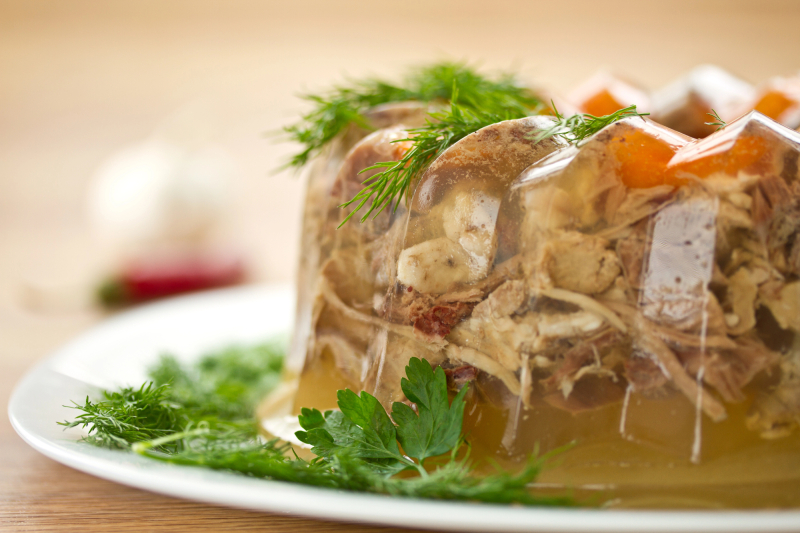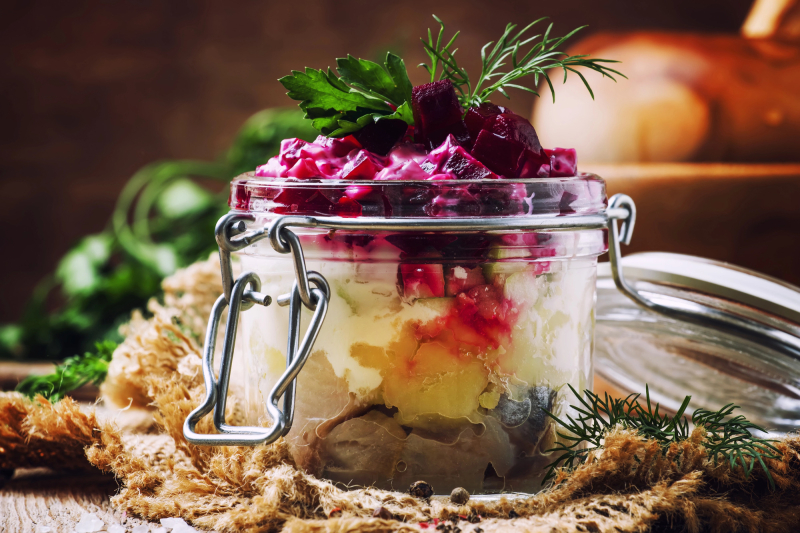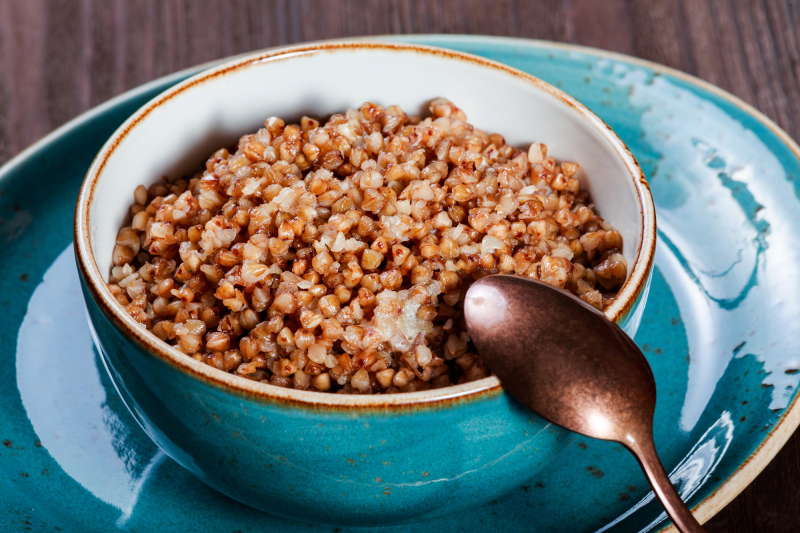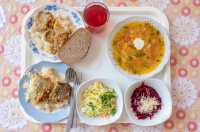Buckwheat with sugar
Buckwheat (греча – “grecha”) is one of Russian cuisine’s main food staples and now a trendy superfood. This versatile kasha can be made savory or sweet, used as stuffing for other dishes, or even turned into Lent-friendly vegetarian “meatballs.”
Buckwheat with sugar is a breakfast option typically served with a dab of butter and, optionally, a splash of milk. While this dish seemingly has its detractors, it is by far the least adventurous entry on this list – and thus the perfect starting point for anyone wanting to expand their palate.
To learn more about the other two kashas on the viral bingo – pearl barley and semolina, aka perlovka and manka – head over to our guide on Russian porridges.
Sea buckthorn. Credit: KamranAydinov via Freepik
Sea buckthorn
Contrary to its name, sea buckthorn (облепиха – “oblepikha") does not grow underwater, but it does thrive in salty air. In fact, almost all of the world’s sea buckthorn comes from sea coasts in Russia and the Nordics or the deserts of China and Mongolia. The bright-orange berry is often compared to pineapple, both in taste and the biting acidity, which is why it’s most often consumed not raw, but mixed with sugar, cooked into jams, or even fermented into wine. Its leaves are also dried and used in aromatic herbal teas, often found in Russian health stores.
Milk soup
Another funky breakfast mainstay, strongly associated with kindergarten fare, is milk soup (молочный суп – “molochnyi soop”). In essence, this is just pasta (typically vermicelli) cooked in milk and sweetened with sugar. Sounds weird? Sure, but if you think of it, it's just cereal in a different shape. Still, whether because of taste, heartiness, or affordability, its variations can be found in many cuisines across Europe, from Russia to Germany.
"Navy-style" pasta with tushonka. Credit: photogenica.ru
Tushonka
Take a peek into any Russian student’s dorm pantry and, among all the canned goods, you’ll spot at least a couple jars of tushonka (тушенка), a cheap and fatty mix of stewed meat. Favored by hikers and fishermen for use in field cooking, it is most commonly found in “navy-style pasta” (макароны по-флотски), a hearty dish of noodles, onion, and mincemeat.
Aspic (kholodets). Credit: photogenica.ru
Aspic
No discussion of “weird Russian foods” ever goes without the next two entries on our list. First up is aspic (холодец – “kholodets”), a gelatinous concoction worthy of a Halloween party spread. While the dish has existed in many cultures over millennia, it might be said there are few places where it’s still as revered as in Russia. The idea is simple: get your fillings (whether meat, veg, eggs, or anything else you desire), steep them in a broth, and let the natural gelatin turn it into a sort of savory jelly. The Russian version is traditionally served with a large helping of horseradish.
Herring under a fur coat. Credit: photogenica.ru
Herring under fur coat
For a dish that sounds strange, looks stranger, and has a taste that is yet even more puzzling, it’s incredible just how beloved herring under fur coat (селедка под шубой – “seledka pod shuboi”) is. Layers of herring, potatoes, beets, cheese, and eggs (spruced up with mayo) create a true extravaganza of kitchen staples that leaves no eater indifferent. It’s a salad that must be seen to be believed – so make sure to include it on your must-try list.
Interested in what others thought of these foods? Head over to ITMO’s YouTube channel to see our daring international students try kholodets and herring under fur coat and share their impressions!
Milt
What is milt (молоки – “moloki”)? Well, there’s no putting it lightly: it’s fish …semen. The male counterpart to caviar, milt is a delicacy eaten in most regions that are historically reliant on fish, such as Japan, Sicily, or Indonesia – and Russia is no different. Herring milt is the most common choice here, eaten in its pickled form and enjoyed for its mild, fishy taste and soft texture. Its nutritional value is nothing to knock at, either – herring milt is 82% water, 16% protein, and only 2% fat!
Kisel
And now for dessert! At the intersection of fruit juice, soup, and aspic stands kisel (кисель), a sweet dish that can be either a drink or a dessert depending on how thick you make it. That’s right – it’s a choose-your-own-adventure situation! Traditionally made with oats, it is now commonly made with starch and any berries of your preference (or even with milk for a panna cotta-like effect).




